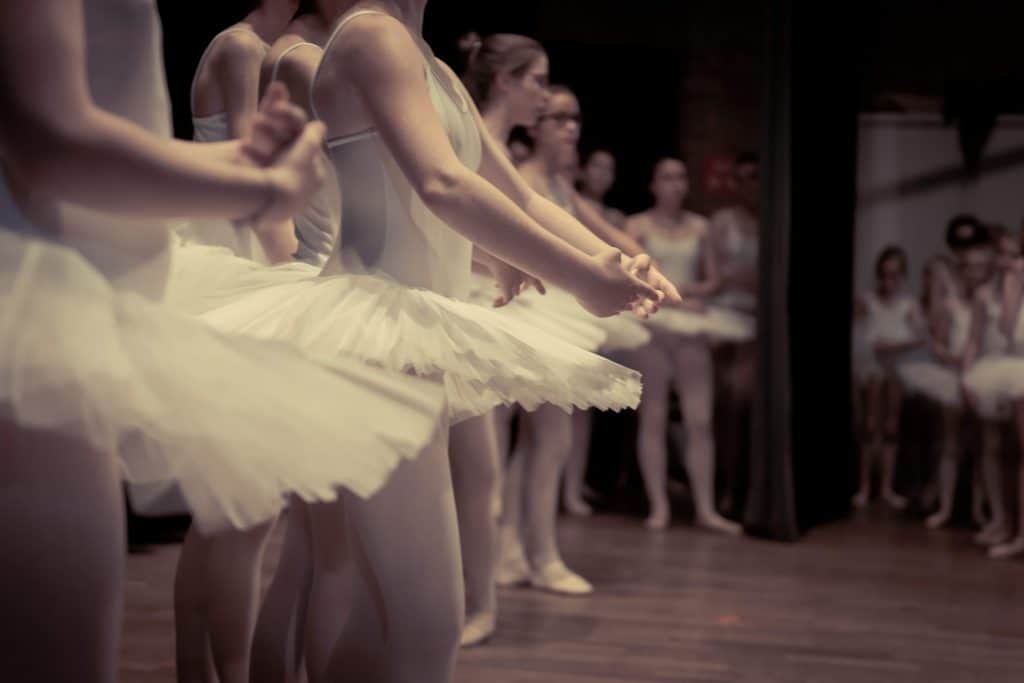
Many parents who want to enroll their child in ballet classes have one image before their eyes: a smiling ballerina in a cute tutu skirt. However, not many people are aware of the advantages and disadvantages of such classes. Check, whether it is worth to enroll a toddler to the ballet school!
Whether your child is 4 or 14 years old, they can still reap the benefits of ballet lessons. Just make sure you enroll them in age-appropriate classes. Ballet increases muscle strength, flexibility, and range of motion. Additionally, it improves coordination, balance, and endurance. It also strengthens the cardiovascular system. Like other forms of dance, ballet can improve body awareness and control.
Importantly, it positively affects not only physical health, but also mental and emotional health. By instilling a sense of pride and accomplishment, dance increases self-confidence. This makes children more willing to take on challenges. In addition, training can be a great way to relax and use excess energy productively after school.
Regular attendance helps develop social skills. Ballet and other forms of dance foster teamwork, communication and trust. They also encourage making new friends and overcoming shyness. They also teach us how to cope with the stress that accompanies us during public appearances.

Ballet has a positive effect on cognitive functions. Students improve their sensory awareness. By participating in classes, they improve attention, memory, and general awareness. They also learn effective learning techniques that will be useful in other areas of life. For children who want to explore other styles of dance, ballet provides a solid foundation and a great starting point

The mentioned footwear lengthens and strengthens the limbs. Additionally, they help build muscles. Thanks to them, ballerinas have leaner, stronger arms and legs. Moreover, pointe shoes make the movements more graceful. They also motivate them to work harder and master the correct technique. On the other hand, they increase the risk of sesamoiditis. This is a disease in which the small bones and tendons connected to the toe become overstressed or rupture. This results in severe pain on the inner edge of the metatarsal.
In addition, ballerinas are more prone to hallux valgus, a bony protrusion of the joint at or near the base of the big toe. This condition manifests as redness, inflammation and pain. People who practice ballet also often suffer from plantar fasciitis. It appears as a result of excessive strain on the plantar fascia, which is a thick band of tissue from the heel to the toes. It is signaled by severe pain on the inside of the heel base and arch. When enrolling a child in ballet school, it is worth remembering what injuries ballerinas are most often exposed to

While dancing has many benefits, it doesn’t just involve having fun. Practicing and perfecting movements can affect a dancer’s body. Moreover, he is expected to look perfect. He also has to set himself up for criticism and constant evaluation
Learning ballet takes a lot of time. It is not uncommon for dancers to practice several hours a day for several days a week (5-6 times). Professionals train up to eight hours a day, especially before competitions or performances. Therefore, a deep commitment and passion for ballet is crucial. Ballet dancers often do not have time for other hobbies, friends and family.
There is also pressure on dancers to be thin. Dance, especially ballet, imposes a filigree figure. It is worth remembering that even a few extra pounds can affect a dancer’s appearance and the way she balances her body. Competing in a group increases the risk of eating disorders.
Ballet dancers, especially beginners, have to deal with stage fright before a performance. It is every dancer’s worst nightmare. He sees the crowd watching him and freezes, forgetting his next step. To avoid confusion during a performance, many ballet schools make sure students have the right experience before they stand on stage
Main article photo: photo by Sergei Gavrilov, source: unsplash.com